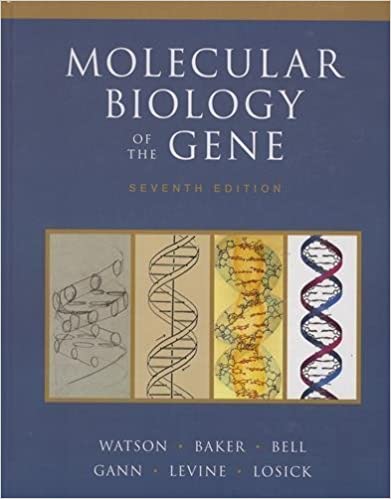
Molecular Biology of the Gene 7th Edition by Richard Losick, James Watson, Michael Levine, Tamara Baker, Alexander Gann
Edition 7ISBN: 9780321762436
Molecular Biology of the Gene 7th Edition by Richard Losick, James Watson, Michael Levine, Tamara Baker, Alexander Gann
Edition 7ISBN: 9780321762436 Exercise 4
You are cloning Gene X from S. cerevisiae into a plasmid. You want to include the sequence 1 kb upstream and downstream from the open reading frame to try to get the gene to express under its own promoter. For this particular region of the genome, there are no other expected AUG codons upstream of the open reading frame for Gene X. To ensure that the protein is expressed, you try to complement the deletion strain for Gene X with your plasmid version of Gene X, but it is not complementing (not returning to the wild-type phenotype). You are not worried about splicing issues for S. cerevisiae. You suspect that you have a mutation in your cloned Gene X. The sequencing facility is down this week, but you have access to an in vitro translation system in your lab. You translate the wild-type Gene X and the cloned gene X using the in vitro translation system. You separate your products using SDS-PAGE and stain with Coomassie Brilliant Blue (data below). You expect a small protein, so you use a low molecular weight maker.

A. Do you think your cloned gene X has a mutation? If so, what type (missense, nonsense, frameshift)? Explain your answer in terms of the data.
B. Why do you think your cloned gene is not complementing the deletion strain? Explain your answer in terms of the data.

A. Do you think your cloned gene X has a mutation? If so, what type (missense, nonsense, frameshift)? Explain your answer in terms of the data.
B. Why do you think your cloned gene is not complementing the deletion strain? Explain your answer in terms of the data.
Explanation
Yes, the cloned gene
has a mutation. ...
Molecular Biology of the Gene 7th Edition by Richard Losick, James Watson, Michael Levine, Tamara Baker, Alexander Gann
Why don’t you like this exercise?
Other Minimum 8 character and maximum 255 character
Character 255


